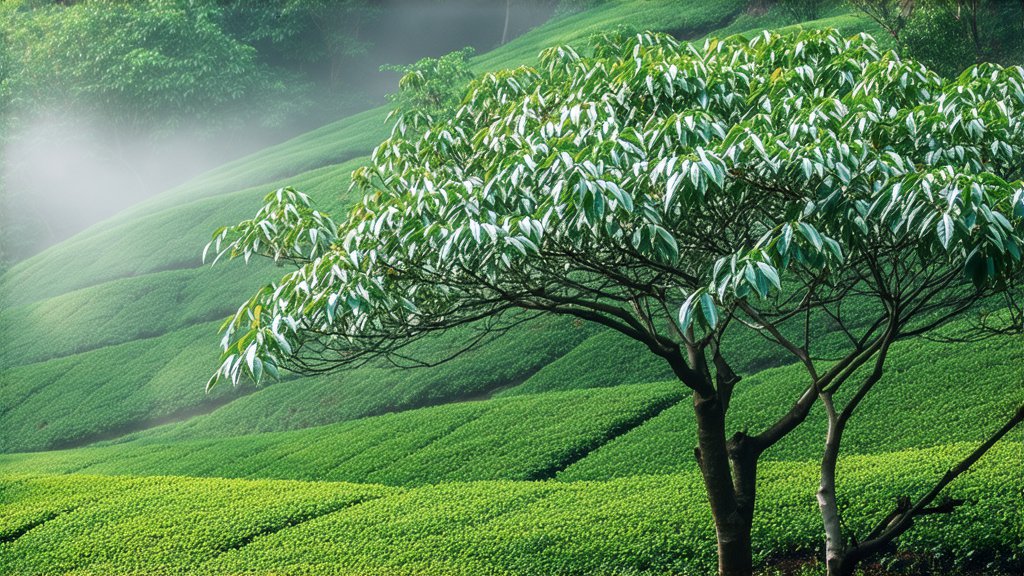
The world of Chinese tea is vast and varied, encompassing an array of types that each offer unique flavors, aromas, and experiences. Among these, Baihao Yinzhen stands as a paragon of purity and simplicity, embodying the essence of minimalism in its production and presentation. This article delves into the history, varieties, production process, and tasting techniques of this exquisite white tea.
History and Origin
Baihao Yinzhen, also known as "Silver Needle," hails from Fujian Province, China, particularly the Fuding and Zhenghe regions. Its name translates to "White Hair Display" or "Silver Needle," referring to the fine silvery down that covers the young buds and gives the tea its distinctive appearance. The origins of Baihao Yinzhen date back several centuries, with historical records indicating its presence during the Tang Dynasty (618-907 AD). However, it wasn't until the Qing Dynasty (1644-1912) that it gained significant popularity and recognition.
Varieties and Characteristics
Baihao Yinzhen is primarily produced from the Camellia sinensis plant, specifically from the buds and youngest leaves before they fully unfurl. The tea is characterized by its pristine white color, which comes from the fine hairs (or pekoe) on the buds. These hairs are not only visually appealing but also contribute to the tea's delicate flavor profile. There are two main grades of Baihao Yinzhen:
-
Top Grade (Yinzhen Mi Xu): This consists solely of the buds, offering the most refined taste and highest quality. It is incredibly rare and sought after by connoisseurs.
-
Second Grade (Yinzhen Mi Lan): This includes both the buds and some of the top leaves. While slightly less exclusive than the top grade, it still maintains a high level of quality and flavor.
Production Process
The production of Baihao Yinzhen involves minimal processing, preserving the natural qualities of the tea leaves. The steps include:
-
Plucking: Only the finest buds and young leaves are handpicked, usually in early spring when they are at their freshest and most tender.
-
Withering: The plucked leaves are spread out in a thin layer and left to wither naturally under shade. This process can take up to 72 hours and allows the leaves to lose moisture slowly, enhancing their natural sweetness.
-
Drying: After withering, the leaves undergo a gentle drying process, often using low temperatures to preserve their delicate structure and flavor.
-
Sorting: Finally, the dried leaves are sorted to remove any imperfections and ensure uniformity in size and quality.
Tasting Techniques
Tasting Baihao Yinzhen is an experience that engages all the senses. Here are some tips for an optimal tasting session:
-
Visual Appreciation: Observe the dry leaves, noting their silvery hue and delicate structure. When brewed, watch how they unfurl gracefully in the water, resembling underwater dancers.
-
Aroma: Before tasting, take a moment to inhale the subtle fragrance. Baihao Yinzhen typically has a light, floral aroma with hints of honey and melon.
-
Tasting: Sip the tea slowly, allowing it to coat your palate. Notice the smooth, silky texture and the balanced sweetness that is characteristic of high-quality white tea. The flavor profile is often described as clean, crisp, and slightly vegetal, with a lingering finish.
-
Aftertaste: Pay attention to the aftertaste, which should be refreshing and clean, without any bitterness or astringency.
Health Benefits
Beyond its aesthetic and sensory appeal, Baihao Yinzhen offers several health benefits. Rich in antioxidants, it helps combat free radicals in the body, promoting overall wellness. It is also known for its calming effects, aiding in relaxation and stress relief. Additionally, Baihao Yinzhen supports digestion, boosts the immune system, and may contribute to weight management when consumed as part of a balanced diet.
Conclusion
Baihao Yinzhen is more than just a tea; it is an experience that connects you to centuries of Chinese tea culture. Its minimal processing highlights the natural beauty and flavor of the tea leaves, making it a favorite among tea enthusiasts worldwide. Whether you are a seasoned tea drinker or a novice, exploring Baihao Yinzhen will undoubtedly enrich your understanding and appreciation of Chinese tea.
So, next time you savor a cup of Baihao Yinzhen, allow yourself to be transported to the misty hills of Fujian, where tradition and nature converge to create a truly enchanting beverage.